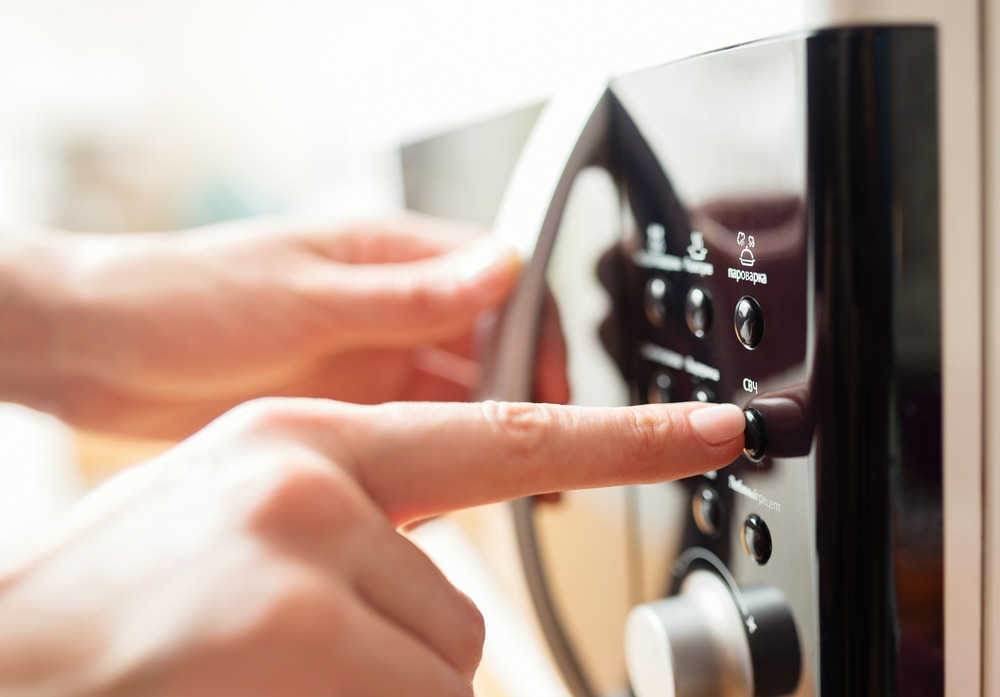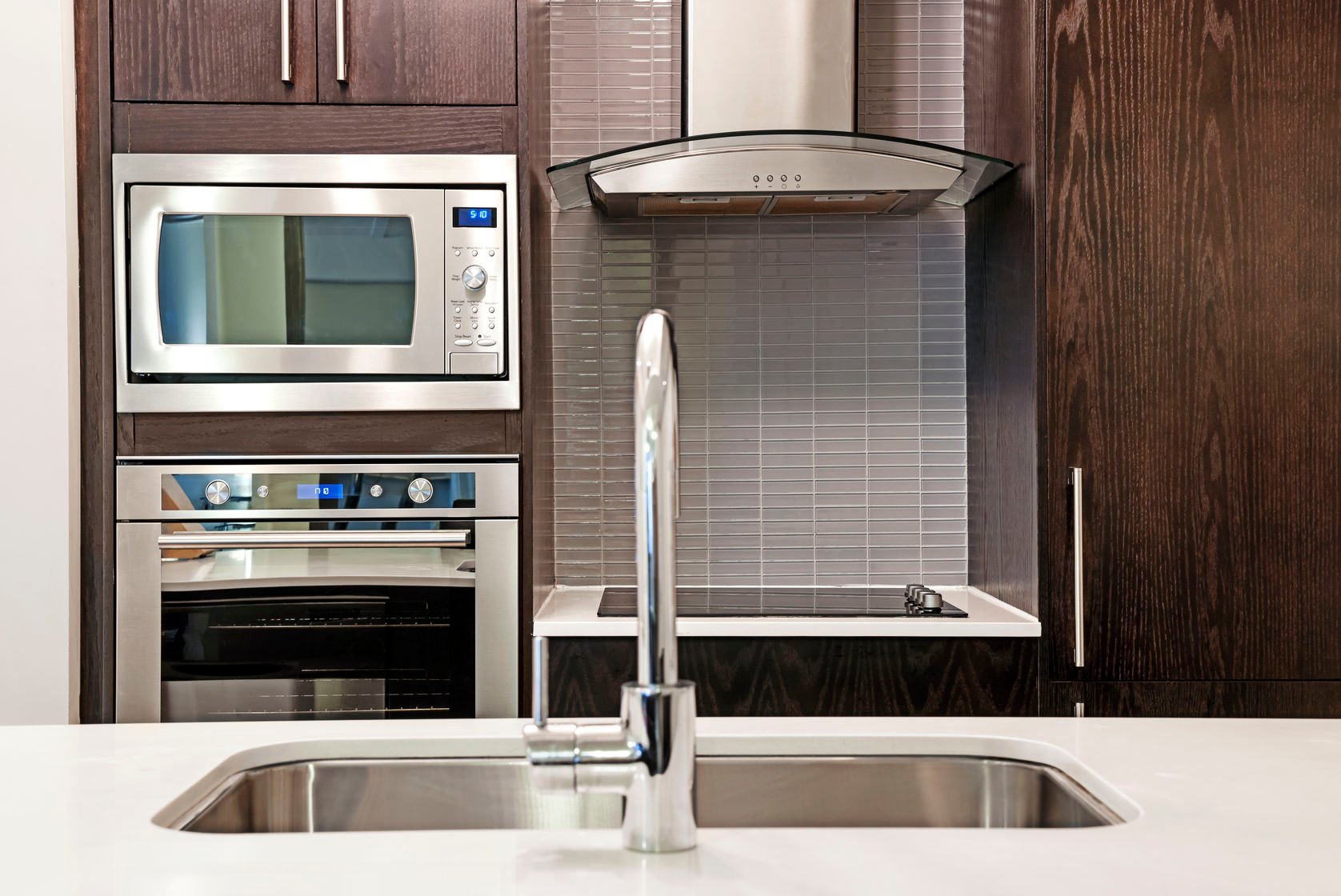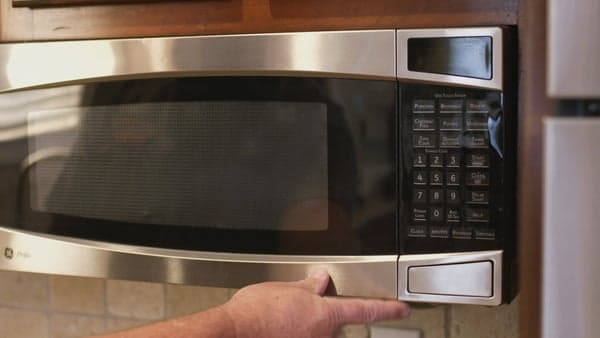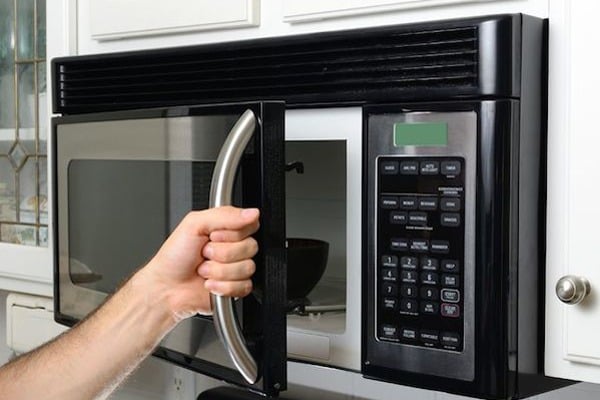
11 Things You Should Never Put In The Microwave

When you are constantly on the move, you use the microwave more than ever. These 11 things should never be put in your favorite kitchen appliance.
When you’re constantly on the run, getting things done quickly is important, especially when it comes to food. It seems the more you have to do, the less time you want to spend on meal preparation. Although you may not realize it, your microwave puts in just as much work as you do. While it might be one of the most convenient appliances for warming up your grub (and one of our favorite ever), that doesn’t mean it’s meant to withstand everything. A key component of microwave safety is knowing what does and doesn't belong in the appliance. Here are a few of the things you should NEVER put in the microwave.
1. Aluminum Foil
It’s nice to see sparks fly, but not so much when it comes to reheating your food. A microwave’s interior is actually made of metal, which allows it to function like a mirror. Instead of casting a reflection of your face, the metal reflects radio waves or microwaves. The radio waves emit electromagnetic energy, warming up your items. When metal is placed inside a microwave, the waves are reflected off of the item, causing the aluminum foil to burn rapidly and ignite. Needless to say, this is very harmful to your microwave and very dangerous.
2. Paper Bags
All paper bags are not created equal. That bag of tasty popcorn is a little different than the brown paper bag you use to carry your lunch. Popcorn bags are equipped with susceptors, a material that’s made to consume the radio waves produced by microwaves. Typical paper bags, such as those used in grocery stores, do not have susceptors and can release toxins and fumes when warmed up. Because microwaves produce heat so quickly, the bag could catch fire.
3. Plastic Bags and Plastic Containers
It’s safe to say you’ll want to keep all grocery store bags out of the microwave. When heated, plastic releases Bisphenol A, or BPA, an organic compound used to make plastic clear, and phthalates, which allows it to be supple. According to the Harvard Health Publication, "BPA and phthalates are believed to be ‘endocrine disrupters.' These are substances that mimic human hormones, and not for the good." So, unless you’re interested in adding a side of hormones to your leftovers, transfer your food to a glass plate.
4. Travel Mugs
Typically constructed of plastic or steel, a travel mug should not make its final destination into your microwave. Because of the metal that’s part of your microwave’s construction, steel cups will inhibit your beverage from being heated and potentially cause friction from the energy being emitted. For plastic mugs, check labeling to see if it is “microwave safe,” otherwise it’s best to keep your travel mugs on the move. It's worth the extra effort to heat your coffee in a microwave-safe mug and transfer it to your go-to, to-go mug.
5. Your Favorite Shirt
You woke up ready to take on the world today. To commemorate the occasion, you’ve decided to wear your lucky shirt. The shirt was recently washed and needs to be dried, but your dryer is currently occupied. Looking around, you spot your microwave. Microwaves warm things. Warm means dry. You need a dry shirt. All these things make sense. It may seem like your best option, but it’s not. Save your shirt and your microwave. Wait for the dryer; you’ll be glad you did. (And yes, this is something people do.)
Successfully increased your home's value?
Sounds like a perfect time to find the warranty that fits you best.
6. Hard-boiled Eggs
Recipes seem to be popping up everywhere requiring a mug, a few minutes and a microwave. Because microwaves cook at such high temperatures, trying to cook an egg would create an abundance of steam within it's shell. The steam rises in the egg, and quicker than you can say “cracked,” you’ll likely have an egg-y explosion to clean up.
7. Hot Peppers
Who would have thought that a microwave had the power to bring you to tears? If you’re interested in adding a little heat to your heat, using a microwave to warm up your peppers isn’t such a hot idea. Not only can they possibly spark and cause a fire, but when you open the microwave, chemicals released from the peppers may cause you to choke and even burn your eyes. It's a process similar to pepper-spray, so keep that in mind before popping those peppers in your microwave.
8. Styrofoam in Microwave
Though restaurant leftovers have lived in them for what seems like an eternity, polystyrene foam containers, commonly known as Styrofoam, don’t belong in your microwave. Not only is the material difficult to biodegrade, but when heated in the microwave the foam may begin to melt, allowing chemicals to be released into your food. And if the contents inside are hot enough, your food could melt through the packaging. On the plus side, there are some polystyrene foam containers that can be used in your microwave; just make sure you read before warming.
9. Lidless Containers
Unless you’re really into making a day out of cleaning tough messes, then it’s recommended you cover your food before placing it in the microwave. The heat released while warming up that plate of spaghetti can cause your uncovered dish to simmer, jump around and even detonate. Avoid a marinara meltdown. Keep dishes covered using a microwave cover or microwave-safe material.
10. Chinese Takeout Boxes
Thinking about warming up last night’s tasty General Tso’s spicy chicken? Be sure to take it out of the box. Typically Chinese takeout boxes include a thin metal handle, which doesn’t fare well with a microwave. When heated, the wiring may cause sparks or flames. Worst of all, you just wasted an order of General Tso's chicken.
11. Nothing at all
We’ve all been there. You have your mind on one thing and then begin doing another, or maybe you were just in a “let’s see what happens” sort of mood. Powering up your microwave without placing anything inside is a sure way to ruin your appliance. In fact, it could be blown to smithereens. The microwaves released have to have somewhere to go. Without a destination, the waves bounce off each other and are absorbed by the microwave, causing it to combust.
When it comes to microwaves, your best bet is to keep it simple. Remember, they were made to heat your food, not complicate it. The next time you consider putting something in the microwave you’re unsure about, talk it over with your oven or stove. They miss you.
Think you know everything you should and shouldn't put in your microwave? Read even more items you should never nuke.
AHS offers Appliance Warranties and protection plans.
AHS assumes no responsibility, and specifically disclaims all liability, for your use of any and all information contained herein.
Don't worry. Be warranty.
Have a plan for your home when things don't go according to plan
Shop Home Warranties

